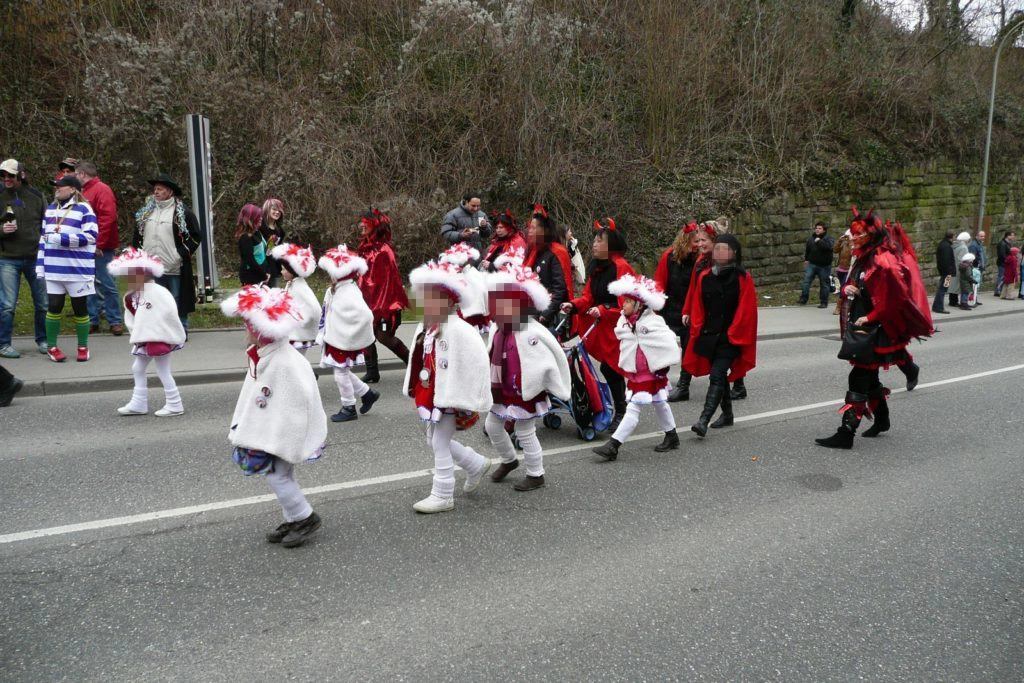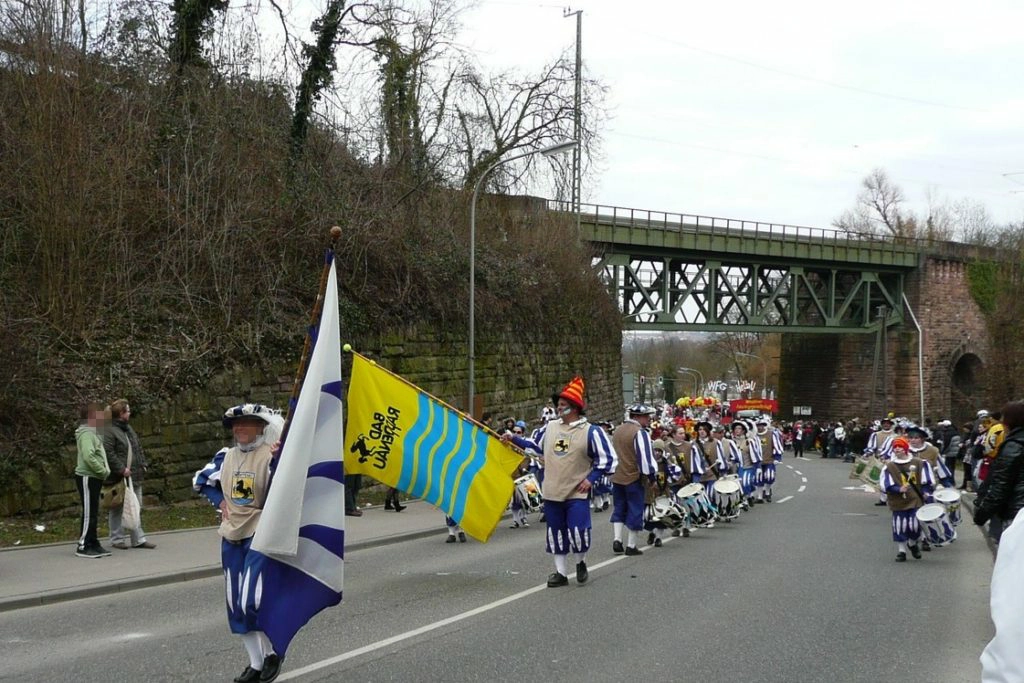Last Updated on March 31, 2023
Carnival in Germany – Faschingsumzug or Fastnachtsumzug – a favorite entertainment not only for children, but also for adults. Carnivals are not held in all German cities, usually larger or tourist ones in western and southwestern Germany.
The largest (most visited) are carnivals in Cologne, Dusseldorf, Mainz.
Read also:
Carnival vocabulary,
about the Swabian-Alemannic carnival in Rottweil and Ulm
German holidays in April, May, Juny. Ostern, Maifest and Fronleichnam and others between
Broom on the house. What is Besen?
What is Wichteln
German festivals in December – January
The first records of carnivals appeared in the 14th century.
German carnival procession date
The date of the procession is assigned according to the church calendar, that is, it can be moved. Usually it falls on the period from mid-February to early March. Often on Monday Rosenmontag (mainly in cities along the Rhine) – 48 days before Easter. This day in the largest Rhine carnival cities is made a day off.
The name Rosenmontag is mostly not associated with roses, but with the verb rasen (rage). But sometimes also with a rose, with which the Pope blesses. However, it only does so after four weeks, so this version is not very convincing.
In some cities, the procession is also held on Tuesday – Fastnachtsdienstag or on the previous weekend. Tuesday is the last day before fasting. Other traditions are also characteristic of this day, for example, at night they burn (throw into the water) a humanoid straw figure Nubbel, personifying the load of sins of the past holiday.
The procession consist of:
groups with figures on moving platforms,
orchestras, masks,
mobile “bars” – decorated booths and trucks in which alcohol is poured for spectators.
Depending on the region and city, mobile figures and masks may have different motifs and themes.
The whole procession lasts from an hour and a half to some hours – it is worth dressing warmer than the weather requires at first glance, so that you do not have to ask for “warming” from moving bars.
[shariff]Related events
The carnival procession is actually only the highest point of the carnival season, which is also called the fifth season.
It all starts long before: on November day with a special date – 11.11 and at a special time, like at 13.02 hours. During the season, the Carnival Clubs (Karnevalverein) gathers together regularly. At these gatherings, a new carnival prince is chosen, carnival groups show their dance and gymnastic numbers and just have fun. These clubs are also close friendly societies, a way of life.
During the carnival week, in addition to the procession, there are also
performances with the expulsion of the burgomaster and the accession of the carnival prince in his place,
children’s carnivals,
costume parties and discos.
Carnival days are held in kindergartens and elementary schools, when children can come dressed in costumes.
Types of carnival in Germany
In Germany there are two varieties of carnival:
along the Rhine – the Rhenish carnival,
and in Baden-Württemberg – the Swabian-Allemannic, which extends further to Switzerland.
If you have a choice, it’s better to watch a large and popular carnival – this gives a completely different impression.
The Swabian-Allemannic deserves a separate topic with the photos. Here are a couple of photos of Rhenish (with a touch of Swabian) from the small but popular town of Bad Wimpfen.
Read more about Swabian-Allemannic Carnival in Ulm and Rottweil.
Rhenish Carnival
The heroes of the Rhenish carnival are the Prince and Princess, figures, bands and guards (Tanzmariechen or Funkenmariechen – girls of all ages in very short skirts). The Prince and Princess are riding in a cart, masks are going in the groups or also riding in a cart, the bands are playing, the guards are marching. Each city (parts of city or clubs) has its own traditional masks. There are no carts with political themes in small carnivals. In large cities, the guards also show gymnastic performances, in Bad Wimpfen only marched.
The traditional delicacies of the carnival season are determined by the upcoming Lent – fat donuts and other butter pastries.



Carnival calls
Spectators are supposed to shout “Helau” or “Alaaf” – these are common calls. But each carnival city has its own additional ones. For this, sweets are thrown into the crowd. All children come to the procession with large packages and collect a very good harvest of sweets. One can also throw flour, perfumes, etc. as advertising.
Follow me
Women’s day
Many men wait for this day at work with a shudder, thinking in advance of the ways of defense (do not forget to bring breakfast from home, buy lunch in advance, stock up on water, close the office and pretend that there is no one in it) or retreat (say sick, take the term anywhere, etc.). Those who do not have the opportunity to hide or have forgotten the date curse these beasts who again do not allow them to work.
At least that’s how it is with my husband at work. And all because it’s Dirty / Fat Thursday, or Women’s Carnival (Weiberfastnacht).
So that men do not imagine too much about themselves, women cut their ties, paint with lipstick those who did not guess to find a tie at the mercy, and demand a ransom. After that, the witches flock the women going to a party with a lot of alcohol.
In some lands this day is celebrated with a feast on the streets, but here it’s more of a craze at work and parties.
Read also:
about carnival words,
about the Swabian-Alemannic carnival in Rottweil and Ulm.
#traditions
Do you enjoy the site without cookies and maybe without ads? This means that I work for you at my own expense.
Perhaps you would like to support my work here.
Or Cookie settings change: round sign bottom left

